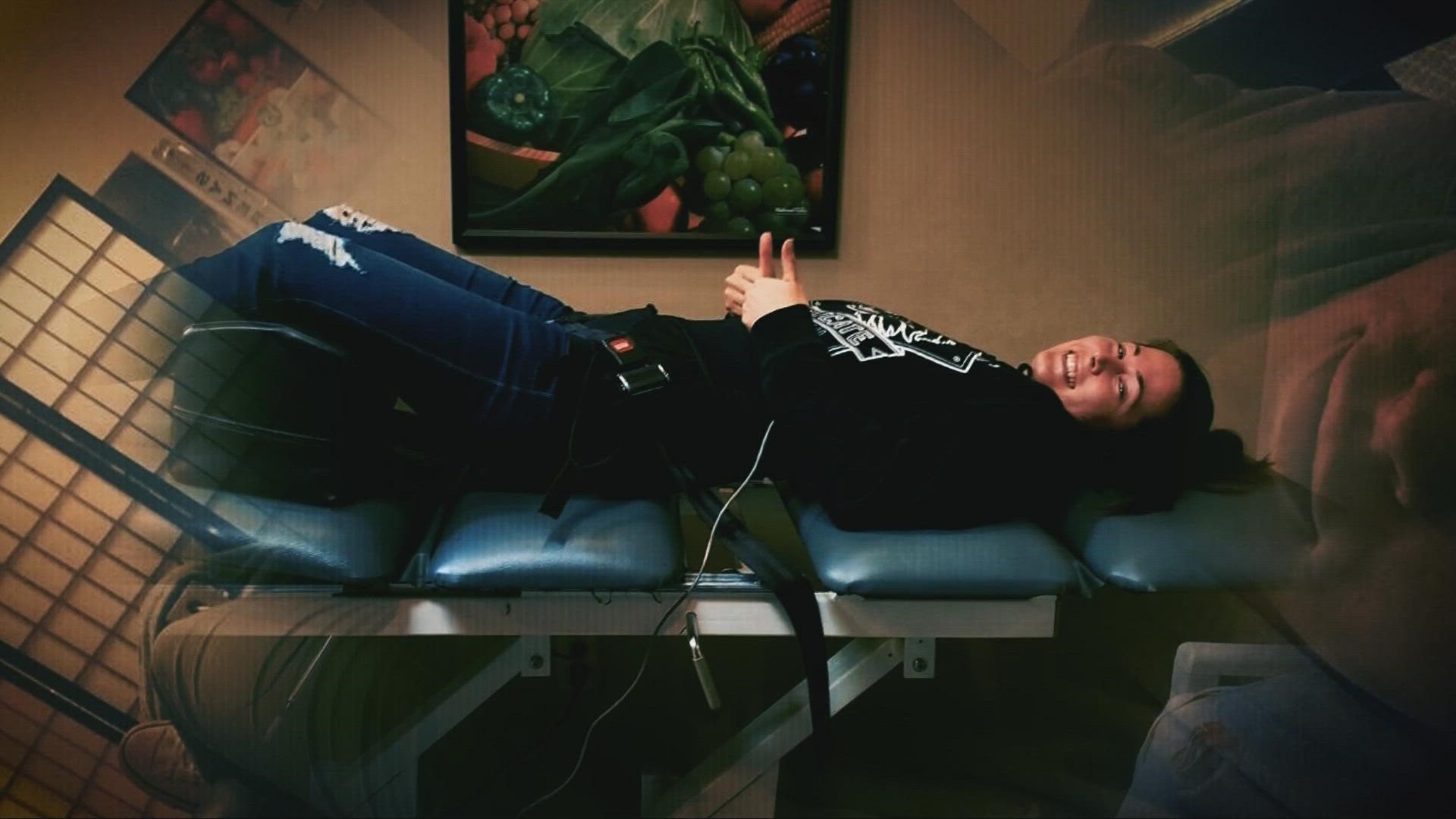ASHTABULA COUNTY, Ohio — In her 20s, Sarah Burdyshaw was the definition of health and fitness. There were Go-Ruck challenges, which involved military style training to complete endurance events.
She was into crossfit, weightlifting and even swimsuit competitions.
But if Sarah had an achilles heel, it was the occastional tweak in her lower back.
"I go to the chiropractor, get an adjustment one time, I'd be fine for another couple years," Sarah said.
Until one day on the golf course, that familiar pinch returned, only this time, it didn't get better, it became significantly worse.
"I ended up going to another chiropractor who had more advanced technology and he did x-rays and found out I had two herniated discs from that drive, I guess," Sarah said.
It marked the beginning of two and a half years of misery. The pain, excrutiating, the mental anguish, heartbreaking.
"If I tried to move, if I had to roll over on my bed, I had to grab the side of my bed to pull me over. Because if I any, your spine is connected to every part of you in your body. So any movement of your arms or your legs or your neck causes all the pain to come back," Sarah said.
The 35-year-old mom went through physical therapy, injections and pain medication but nothing worked.
Until last fall her doctor recommended a new type of procedure called Intracept. It's also known as Basivetebreal nerve ablation. But it's not for everyone.
"You have to be struggling with pain in the low back for at least six months and tried other conservative measures. This isn't a first line therapy," said Dr. Melinda Lawrence, Medical Director of Pain Management at UH Ahuja Medical Center and UH Cleveland Medical Center.
Dr. Lawrence explains that the disc is the cushion between the bones of the spine. For a long time, doctors thought this was the source of pain, but then they discovered pain can also come from changes in the bone over time, especially in younger patients.
"Basically what nerve ablation is, we're heating up and interrupting the nerve and deactivating it to disrupt those pain signals that go to our brain and make us feel pain," Dr. Lawrence said.
It's an outpatient procedure that takes about an hour. Two tiny incisions in Sarah's back proved to be lifechanging, almost immediately.
"All of the excruciating pain that I had for two and a half years, three years was gone," Sarah said.
"Of all the procedures that I've learned in my practice of advanced interventions, this has probably been the one where we see the most dramatic results," Dr. Lawrence said.
Today, Sarah is back to living her life and enjoying the little things that bring her joy, that she no longer takes for granted.
"It's these small things that every day still I just am so, so grateful that I can do," Sarah said.
Today show Co-Host, Carson Daly, also underwent the Intercept procedure this summer, but ultimately needed additional surgery for his condition.
https://www.today.com/health/health/carson-daly-back-surgery-recovery-rcna47894
According to clinical trials, 34% of patients remained pain free five years after having the Intracept procedure.
More Health Reporting from Monica Robins:

